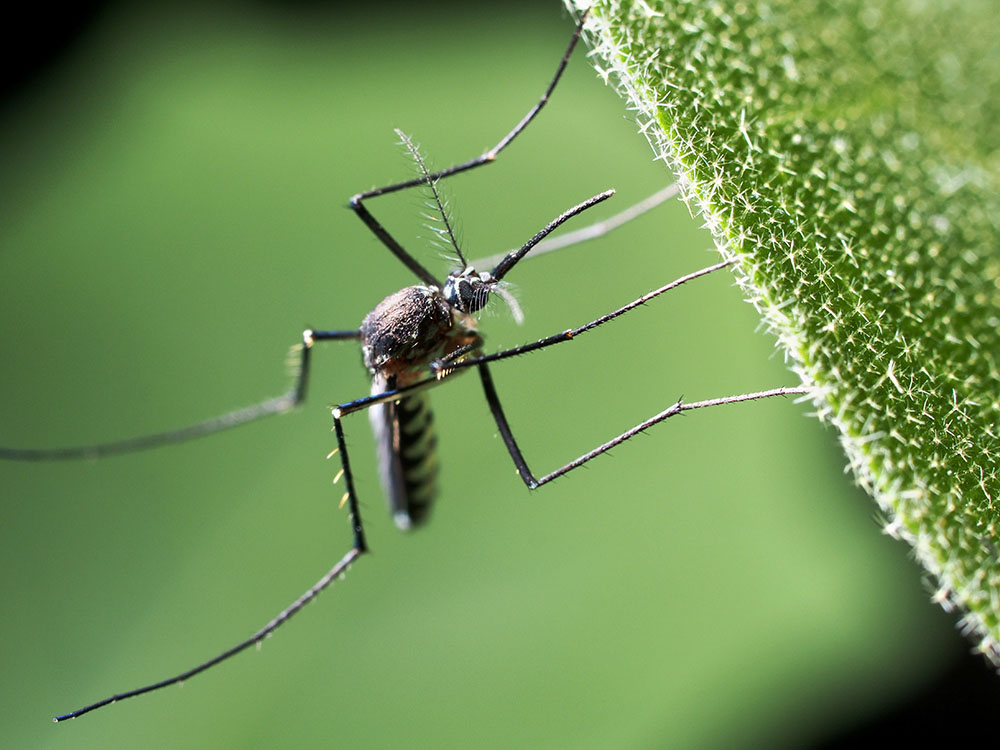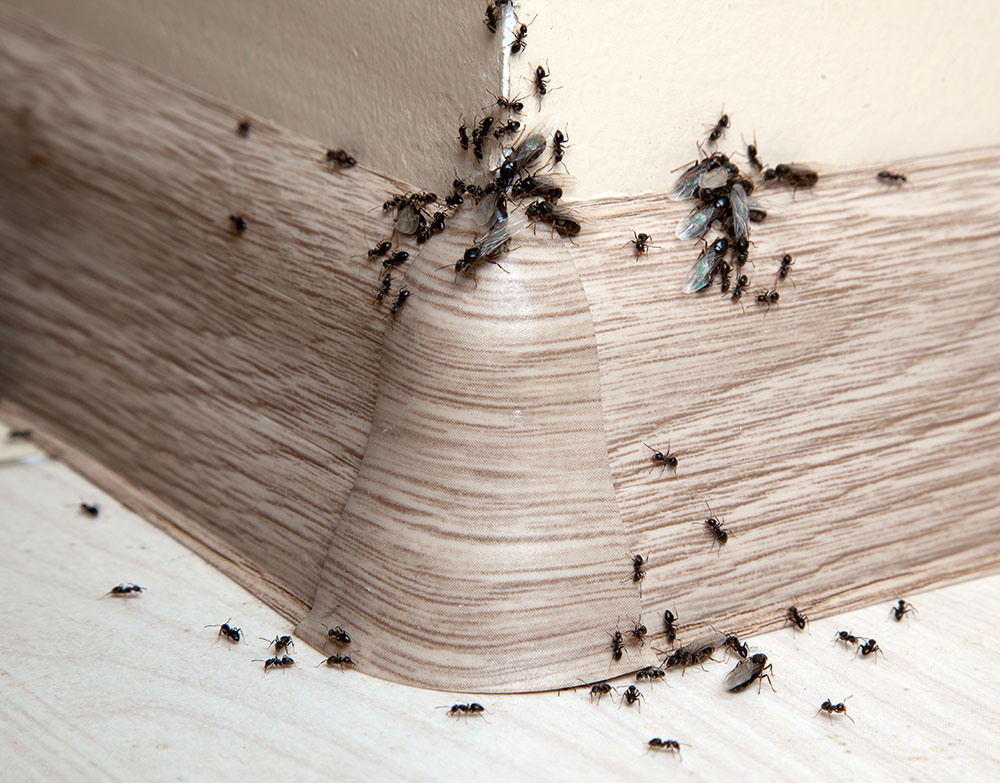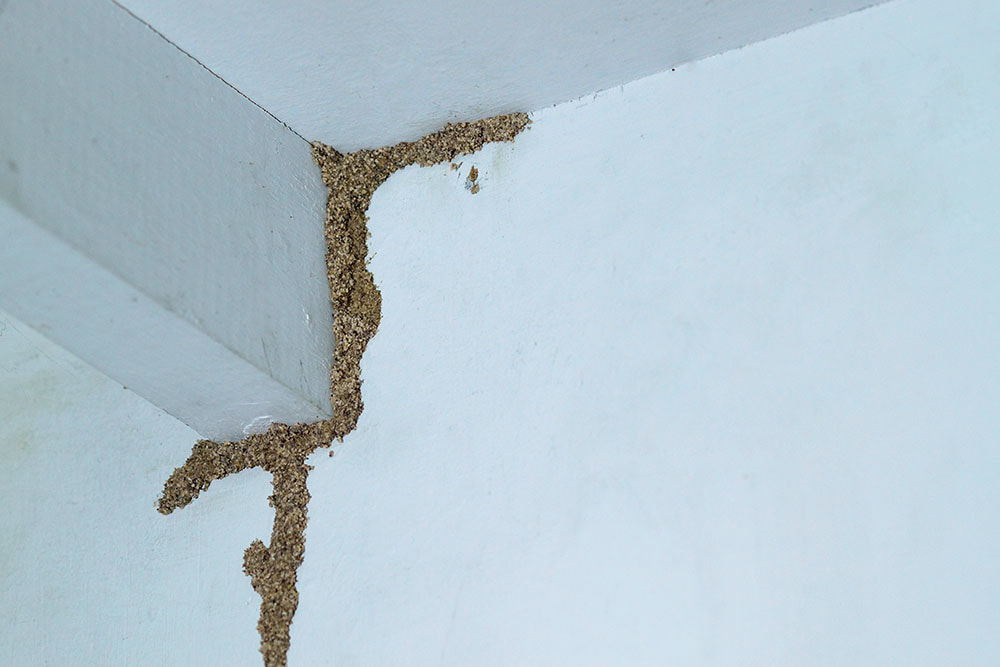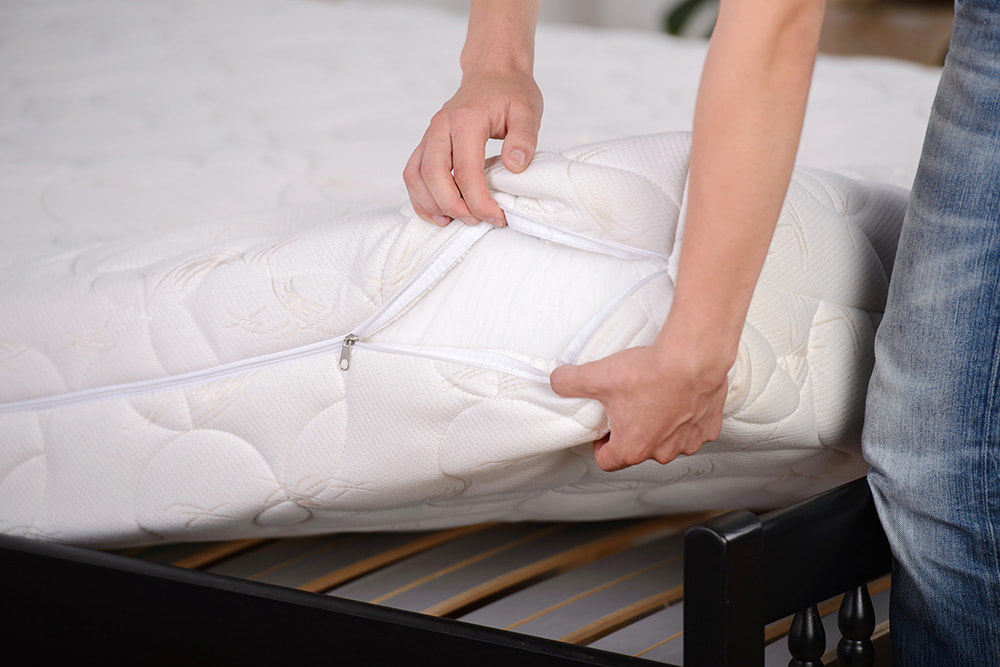|
Mosquito bites are not only itchy and unpleasant; they can also expose you to dangerous diseases. There are things that you can do to make your home less attractive to the blood-sucking pests. If these measures do not work and you are still receiving too many bites, it's time to call for professional mosquito control in Baton Rouge.
Removing Standing Water Is Effective Mosquito Control Mosquitos can only lay their eggs in water, and they prefer standing water to running water. They do not need a lot of water; a depth of 1 inch is sufficient. Therefore, you should drain all the collections of standing water in your yard, no matter how small. Little puddles can collect in the following places and provide nurseries for mosquito eggs and larvae:
If you find any puddles of water in areas such as these, drain them. Trimming Plants Around Your Yard Robs Mosquitos of Places To Hide Mosquitos are not nocturnal but crepuscular. This means that they are most active at dawn and dusk. They do not tolerate hot temperatures very well, so they hide in foliage during the day so they can stay cool while they rest. By keeping your lawn cut short and pulling weeds, you deny mosquitos places to hide on your property during the day. Placing Fans Around Your Porch Provides Extremely Localized Mosquito Control in Baton Rouge When you look at how tiny a mosquito's body is and how delicate its wings are, perhaps it is not surprising to learn that it has trouble flying in a strong breeze. Air circulation also disrupts streams of carbon dioxide exhaled by hosts that mosquitos use to locate their next meal. Running a few fans in an area where you spend a lot of time outside, such as a porch, can help protect you from mosquitos in that specific area. Obviously, if the fans are electric, the spot has to be close enough to the house to plug the fans in. This may only be effective for a limited area as fans do not move air over long distances. Window Screens Keep Insects Out of Your House Even if methods to keep mosquitos off your property are less successful than you hope, you should at least be able to escape from them by retreating indoors. Window screens are effective at allowing fresh air into your home while denying mosquitos and other bugs entrance, but only if they are intact. Unfortunately, window screens are susceptible to damage from snags and punctures. Even a small hole in a screen could be large enough to allow mosquitos to get inside. You should inspect your screens frequently for damage and repair any holes that you find so that you can open the windows without giving mosquitos access to your home. Mosquitos are hardy, and they can be relentless. If they remain on your property despite your best efforts, you need professional mosquito control in Baton Rouge. Call Bug Ninja Pest Control.
4 Comments
No one wants to have an ant problem at home or in the office. To ensure that your business and home in Baton Rouge remain free of bugs, you need to take both preventative and responsive measures for exterminating ants in and around the structure.
Preventing an Ant Infestation Prevention starts with regular professional pest control. The technicians who service your house or workplace can suggest other good habits to keep insect problems at bay. Control Puddles in Yard Most insects are attracted to water, so a good way to keep ants away is to make your property less appealing to them. Keep a watch on the areas of your yard where water tends to pool and update your drainage system to direct the water where it is needed instead of causing puddles. Seal Common Ingress Areas For bugs to get into a building, there has to be an opening where they can enter. Pest experts can help with exterminating ants once they're inside, but it's better to keep them out to begin with. Replace worn-out caulk on windows and make sure doors seal shut when they're closed. Inspect the foundation for cracks where ants can come in. Keep Things Clean Ants are particularly attracted to food, which makes your kitchen or breakroom especially vulnerable. Clean every time you cook, and empty your trash on a regular basis. Make sure that any food particles that go through the garbage disposal wash completely down the drain. Welcome Help From Nature Making your property hospitable for plants and animals that discourage ants is a natural way to prevent infestations. Plant flowers or put out feeders to attract birds that prey upon ants. Certain herbs are particularly able at repelling ants:
Exterminating Ants in Your Home or Business Despite your best efforts, ants may find their way inside. When this happens, the Bug Ninja Pest Control team can assess and address the problem. Finding the Source of the Problem The first step to exterminating ants is to find out where they are coming from. Technicians look for the entry point and trace it back to the nest. If they can eliminate the problem at the source, they not only get rid of the current issue but prevent further infestations. Spraying the nest itself kills the colony. Servicing the Exterior Areas of Your Property Thorough pest control involves spraying both outside and inside your home or office. Technicians treat the perimeter and pay particular attention to the areas where ants are likely to multiply. They target anthills and trails leading to and from them. That way, they are likely to get rid of the problem before the bugs have a chance to make it into your home or office. Exterminating Ants in the Interior Technicians can spray any area of your home that needs ant control. Some treatments may require special preparation on your part to ensure that they are effective, such as removing items from cabinets or drawers. It's important to check with the exterminator beforehand to see if there's anything you need to do. When you need help exterminating ants, Bug Ninja Pest Control can help. Contact us today to get started. Termites are fascinating insects, but they can cause significant damage to homes and businesses. That is why it is essential to take the proper steps if you find a termite tube. Keep reading to learn all about these mysterious mud tubes and what to do if you spot one around your home.
What Is a Termite Tube? A termite tube is a thin structure made from mud and wood pulp. It serves as a protected highway for termites to travel from one area to another. They allow termites to:
Many tubes extend between the ground and the wood sill plate on a building. These are known as working tubes and are used to enter and exit the structure. There are also hanging tubes, which you may find extending from floor joists in basements or crawlspaces or ceilings inside a home with a heavy infestation. Why Do Termites Build Them? Subterranean termites live all (or almost all) of their lives underground. Their bodies require high moisture levels, which are found in the soil. For most termites, exposure to the air and sun will cause them to dry out. As a result, they travel through the soil, wood, or wood fiber materials. When they must go from one area to another, with no direct, protected route, termites build thin tubes out of mud and bits of wood or fibrous materials. So, just like a subway allows people to travel from one place to another without dealing with traffic and road conditions, a termite tube lets the colony move from one area to another without exposing themselves to the outside environment. How Do Termites Make Mud Tubes? Subterranean termites make a sort of plaster from soil and wood mixed with their droppings and saliva. The termites will start applying this to a surface they want to travel over and gradually build up the structure until it forms a tube. It is lengthened as they go forward. An exploratory termite tube can be constructed in just a few days; however, a whole tube will usually take a few weeks to build. Can You Just Take Mud Tubes Down? Many homeowners mistakenly believe removing any visible mud tubes will eliminate the termite problem. However, it will just force them to make new tubes. Alternatively, if they have already settled into another portion of your home, they may not even notice the broken tunnel. You might think the problem is solved when, in reality, it is just growing in another part of the house. For these reasons, removing a termite tube yourself is generally not a good idea. You might want to break a small portion of a tube to determine if it is active. If you decide to give this a try, follow these steps: Knock out a small portion of the tube — no more than a couple of inches. If it is active, there may be termites moving inside. Leave it otherwise undisturbed and inspect it daily. If there are termites still using it occasionally, they will try to repair the tube. On the other hand, if it remains broken after several days or a week, it is probably no longer active. An inactive tube does not mean you are termite-free. Remember that termites build tubes to avoid exposure to the outside air. If the access tubes are inactive, the termites can easily have moved on to another area of the house and are now happily tunneling through the wood there. What Should I Do if I Find a Termite Tube in My Home? Now that you know a bit about termite behavior and why they build tubes, let's look at what to do if you find one around your home. Remain Calm This is a crucial first step. The sight of a termite tube can cause a moment of panic. Your mind might automatically conjure up images of termites crawling through the house's framing or tunnel-marked wood struggling to hold walls up. However, in most cases, especially if you are vigilant about monitoring your home for signs of pests, that is not realistic. So take a moment to collect your thoughts and remain calm as you address the situation. Inspect the Termite Tube Take a few minutes to inspect the termite tunnel. Be careful not to disturb it if you can help it. Consider these things to look out for: Is the mud moist and fresh-looking, or is it dry and crumbling? This can help you determine if it is an active tube or an abandoned one. Remember that an old tube doesn't necessarily mean you don't have an active problem; the termites could simply be in another area of the home now. Are there any signs of termites going into or out of the tube? This is a surefire way to know if there is current activity. Call in a Professional Professional termite control experts have the training and equipment to handle termite infestations in homes and businesses, which is why calling one if you find a termite tube is your best course of action. First, our technicians will determine if the tube you found is active, and then they will dig deeper into the situation. We can often determine where the termites are and then destroy the entire colony. Because termites can control a large portion of land, sometimes traveling up to 200 feet from the nest to find food, this can be a highly complex process. However, we use bait stations to effectively attract termites who then bring the poison back to the rest of their colony. How Will You Handle Termite Tubes? Now that you know the best thing to do if you find a termite tube around your home, the next steps should be easy. First, no matter how gross the tubes may seem, try to remain calm and inspect them for moisture content or visible activity. Then, contact our office to schedule a professional inspection. Our technicians at Bug Ninja Pest Control know the correct way to handle termite mud tubes to eliminate the infestation at its source. Did you know the chances of bringing bed bugs into your home are higher if you travel? However, your plans shouldn't be put off just because bed bugs can quickly hide and spread. Don't wake up to swollen, itchy bites and the fear that blood-sucking insects are crawling around in your bed. Avoid bed bug infestations by checking for bed bug eggs at home and while you travel.
How To Identify Bed Bugs Bed bugs are insects that feed on the blood of mammals, including humans. They prefer to emerge past midnight when their prey is asleep, the better to go undetected. Unfortunately, neither daylight nor artificial light prevents bed bugs from emerging to sneak a snack if they're hungry. Many people develop a swollen red mark on their skin from a bed bug bite, but others show no symptoms of being bitten. A bed bug infestation is challenging to confirm based on bite characteristics alone because skin conditions such as eczema or mosquito bites can mimic bed bug bites. The best way to find out if you have a bed bug problem is to find and examine the culprit. The main physical characteristics of bed bugs include:
These parasitic insects must feed every two weeks to reproduce but can stay alive for a year or more without feeding as they wait to mate. This endurance is a large part of why bed bug problems can be difficult to eradicate on your own. Enlist the expertise of a licensed pest control company to verify the nature of the infestation and resolve it quickly and competently. Identifying Bed Bug Eggs One bed bug colony can double in approximately two weeks due to rapid growth and reproduction rates. It also takes just over a month for a bed bug to achieve reproductive capabilities, and female bed bugs can lay over one hundred eggs during their year-long lifetime. The eggs of bed bugs are a milky white color and are difficult to detect with the naked eye due to their tiny size, no bigger than the eye of a needle. Eggs older than five days have an eyespot and are closer to hatching. When you're traveling, always check the following items in your hotel room for bed bug eggs:
The presence of bed bug eggs indicates an active infestation and that they're feeding on you, your family or your pets. It's critical to catch bug eggs before they hatch and worsen an infestation. How To Recognize Bed Bug Look-Alikes Some insects resembling bed bugs are harmless, while others carry potential hazards. Among the most common pests mistaken for bed bugs are:
While bed bugs are not known to transmit diseases, other common pests do. Watch out for the following bed bug look-alikes. Cockroaches Pre-adult cockroaches called cockroach nymphs possess similar coloring and shape to bed bugs. Cockroaches eventually grow to become much larger than bed bugs, however. They can spread disease-causing microorganisms through food exposed to their feces and vomit. Ticks Ticks consume the blood of humans and animals like bed bugs do. However, they feed for hours rather than minutes and are more likely to be discovered latched onto the skin of animals and humans. Bed bugs and ticks share similar coloring and shape, but ticks are usually smaller. Ticks can also transmit diseases like Rocky Mountain spotted fever and Lyme disease to humans. Fleas Fleas suck blood like bed bugs, though they usually prefer animal blood to human blood. When fleas aren't actively feeding, you can find them lounging in pet beds, bedding or toys. Fleas are different from bed bugs due to their smaller size and long back legs, enabling them to jump far distances. These parasitic insects can transmit dangerous diseases such as typhoid and plague. A licensed pest control agency can handle an infestation best, whether you suspect you have bed bug eggs or some other pest. They have the knowledge and experience to correctly identify the bug species and form a treatment plan to evict your unwanted guests. How To Spot a Bed Bug Problem Bed bugs inhabit dimly lit, compact spaces close to animals, regardless of living conditions. Their small size enables them to hide and travel without being immediately detected. If left untreated, bed bugs spread when people move contaminated furniture, baggage or clothing, eventually settling throughout entire houses, hotels and apartment complexes. Here are some ways to look for bed bug infestations at home or while you travel. Look for Adult Bed Bugs In addition to eggs, bed bugs leave behind other signs that they've made themselves at home. Check for these signs when you change bedding at home or first thing after entering a hotel room:
The high blood content of bed bug waste gives it a rusty brown color. Bed bugs shed their waste and their skins as they feed and grow. The sweet, musty smell is the product of pheromones released by the bed bugs and usually indicates a worse infestation. Some bed bugs have developed pesticide resistance, rendering some treatments less effective. Avoid uncertainty by consulting a licensed pest control company. They are best equipped to eliminate any level of bed bug infestation. How To Eliminate Bed Bug Eggs and Adults Don't hesitate to hire a licensed pest control company to handle an infestation. It may seem tempting to save money by taking care of a pest problem yourself. However, inexperienced attempts to get rid of pests often cost more time and hassle due to incomplete eradication and spreading of the pest. Contact Bug Ninja Pest Control to eliminate pests at any stage of life, including bed bug eggs. |
AuthorI really enjoy researching and writing about pests. The more we know about bugs, the easier it becomes to control them. Categories
All
Archives
February 2024
|
|
© 2021 Bug Ninja Pest Control.
All rights reserved. |
Services |
Contact |
|






 RSS Feed
RSS Feed

